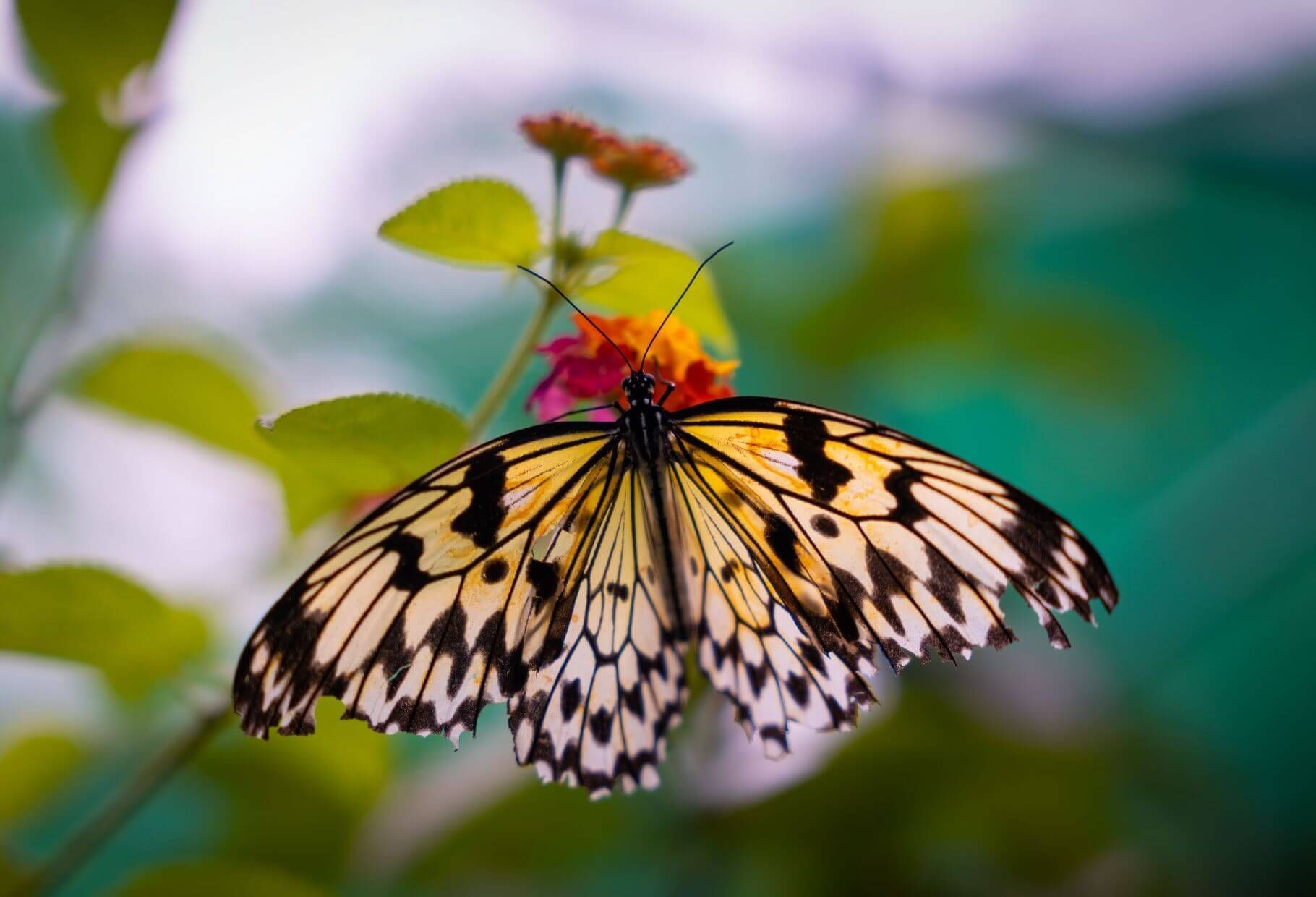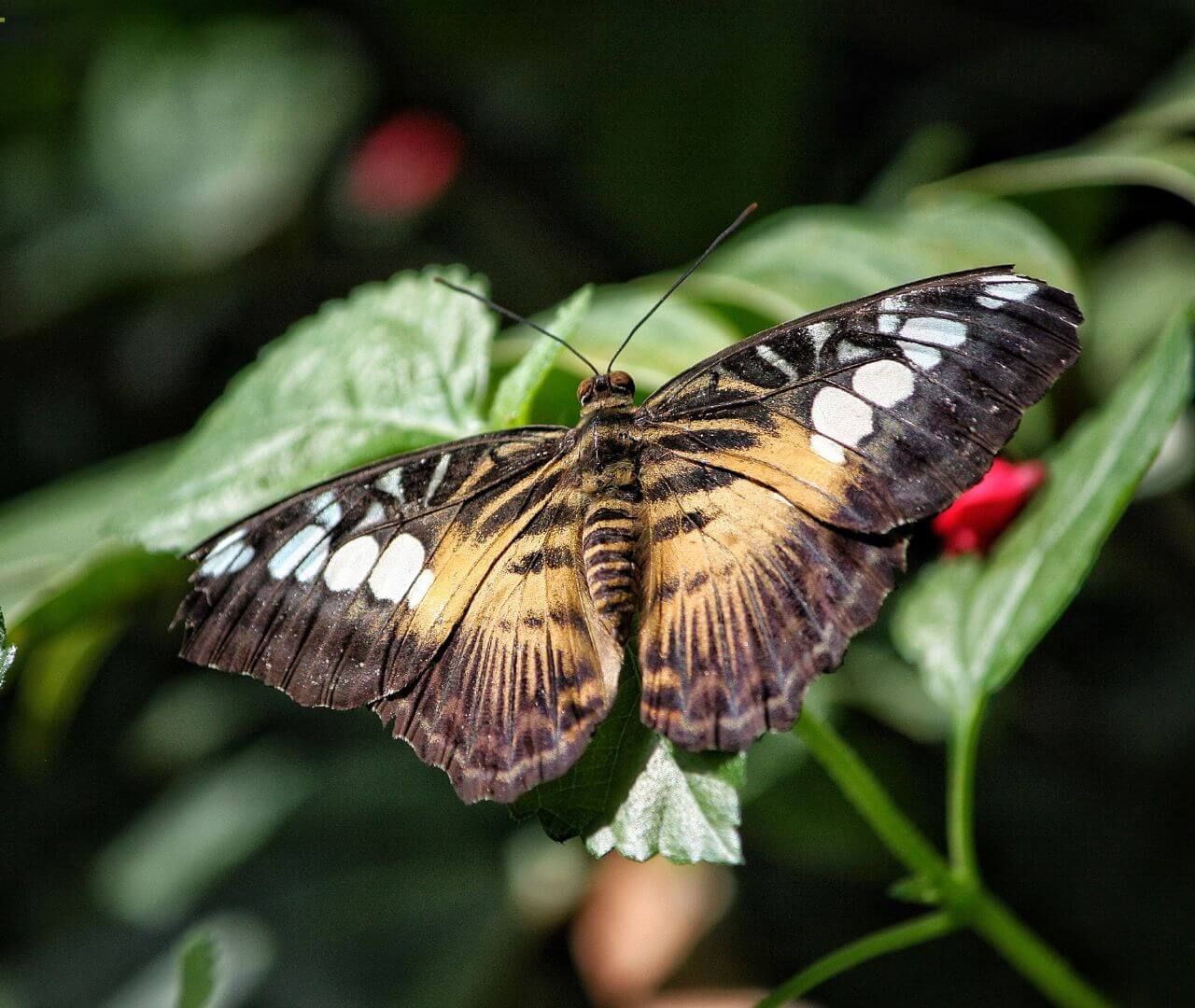Butterflies

Let's Learn About Butterflies
Word of the Week
Metamorphosis
Metamorphosis is the process of an animal changing from one form to another in distinct life phases. They look and act differently in each phase.
Insects like butterflies and dragonflies go through metamorphosis. So do amphibians like frogs and salamanders.
Fast Facts
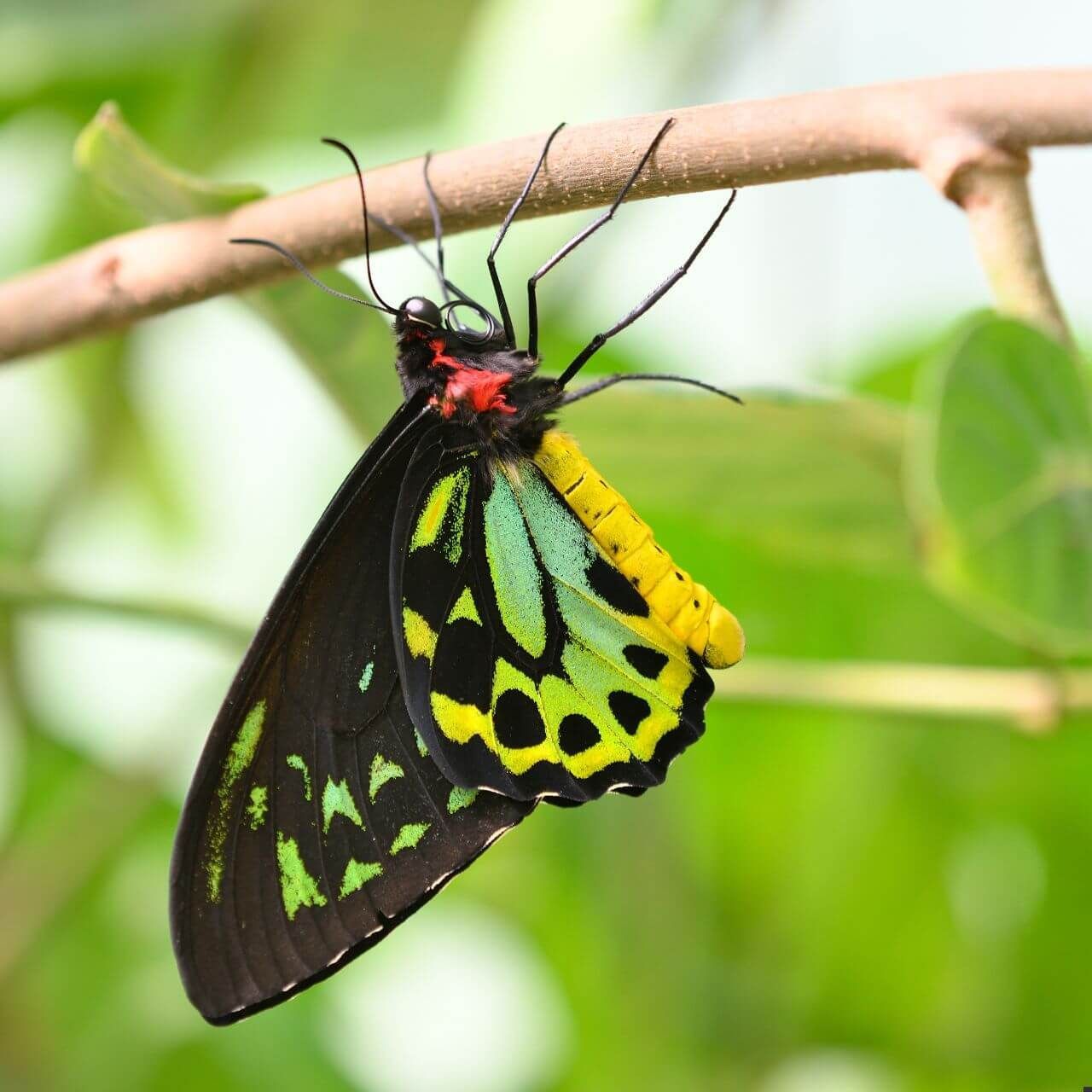
Where do butterflies live?
Butterflies live on every continent except Antarctica.
They live in a many different habitats. Butterflies are found in grasslands, savannas, deserts, and even in cold boreal forests. They are most common in tropical environments, like warm, mountain forests.
What do butterflies eat?
Butterflies are nectarivores, meaning they feed mostly on nectar.
Nectar is a sweet sugary liquid made by flowers. Butterflies use their long, straw-tongue called a proboscis to slurp up nectar.
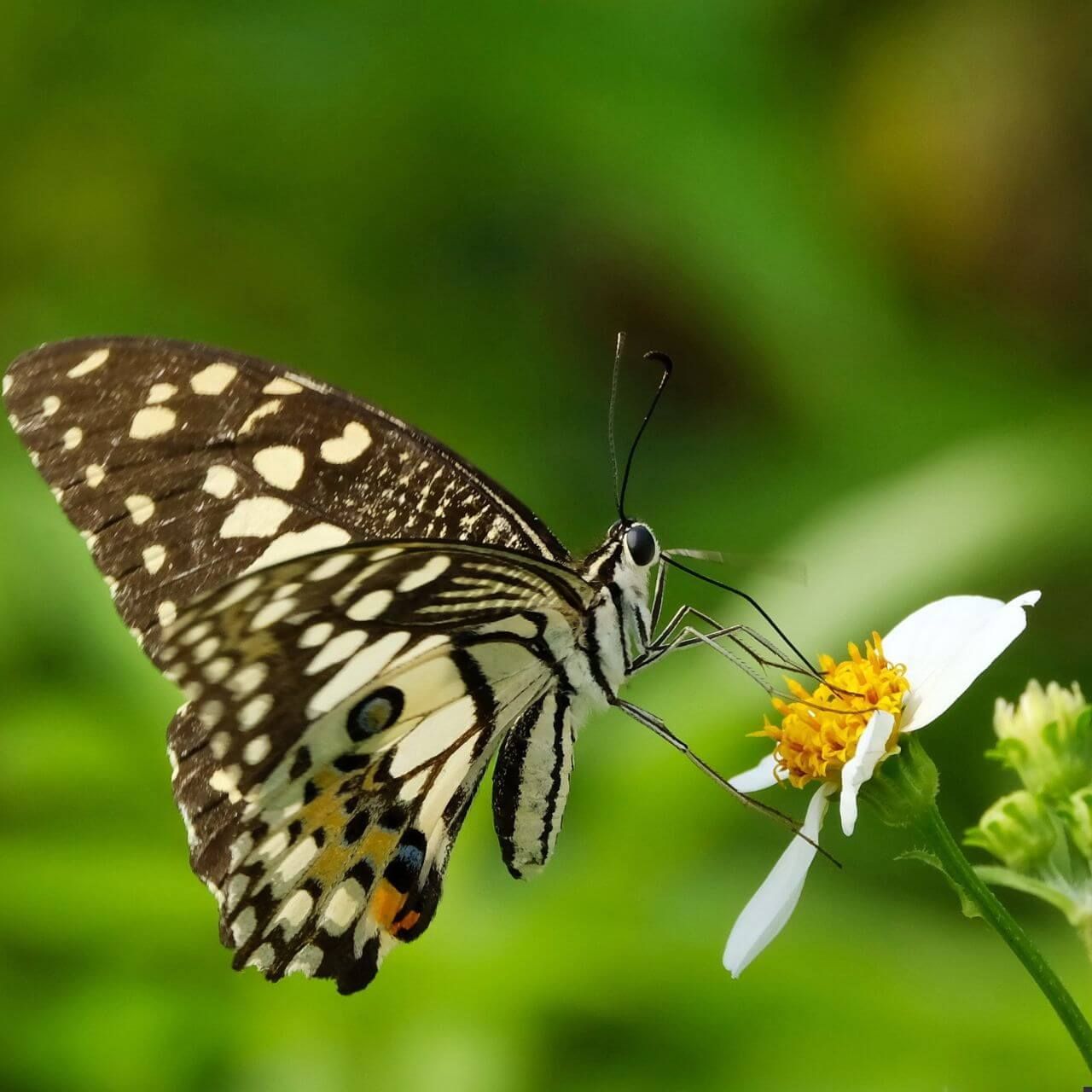

What traits do butterflies share?
There are more than 20,000 species of butterflies. They have traits in common, such as...
- Large, mostly colorful wings.
- The ability to taste with their feet and antennae.
- Compound eyes and powerful vision.
- Metamorphosis.
How many butterflies are there?
There are more than 20,000 species of butterflies.
Unfortunately, many butterflies are endangered because of threats like habitat loss, pesticides, and climate change.
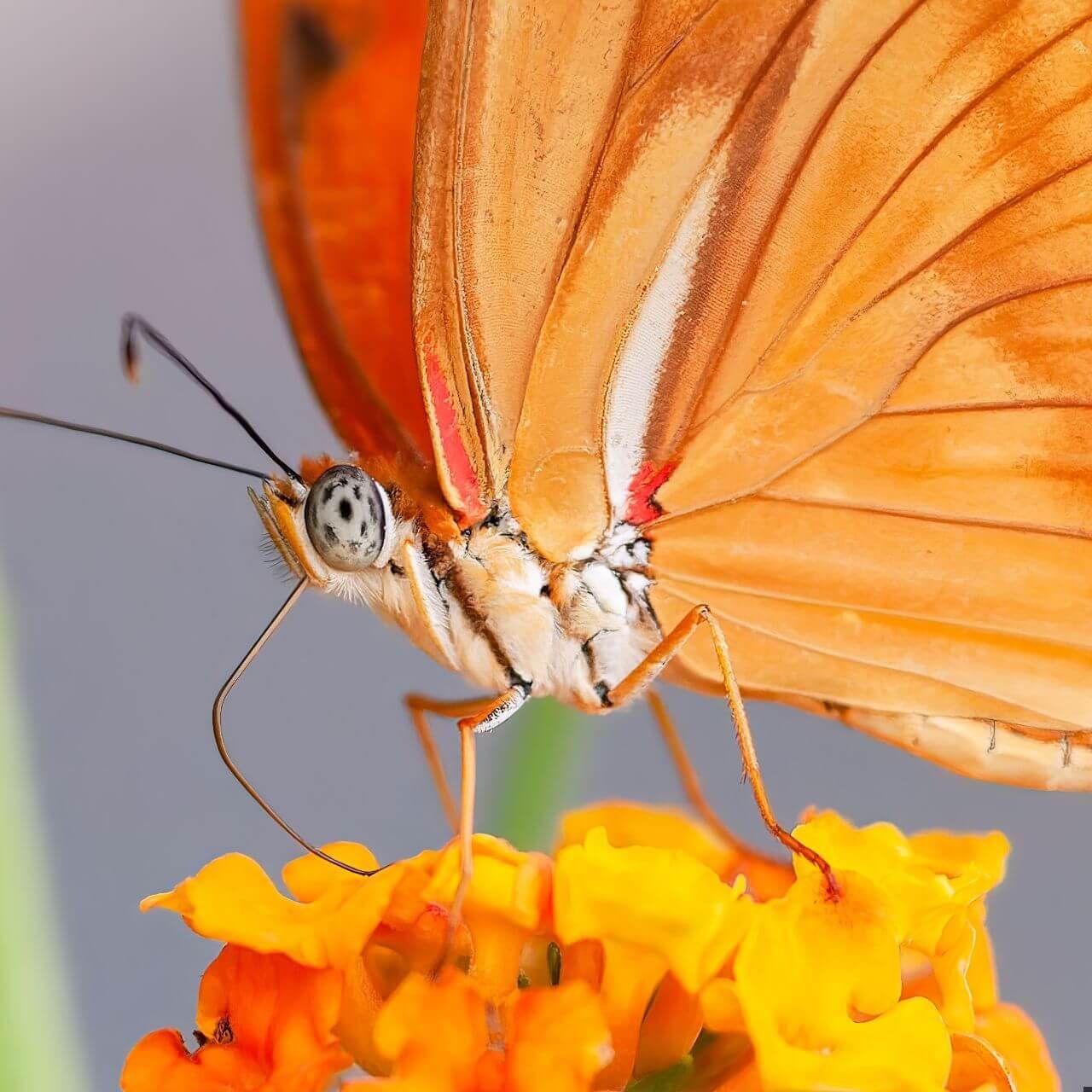
Species Spotlight
Large Blue Butterfly
Phengaris arion
Most butterflies have similar life cycles. An egg hatches into a caterpillar, which eats leaves. Eventually, it transforms into a butterfly. Then, the butterfly lays eggs, and the process begins again. However, with more than 20,000 species of butterflies, there are bound to be a few that do things differently. For example, the large blue butterfly.
Large blue butterflies live in meadows in Europe and Asia. Like most butterflies, they lay eggs on the leaves of a specific host plant. When they hatch, the caterpillars feed on the plant for a few weeks. Then, things get strange. They do not continue eating leaves like other caterpillars. Instead, they fall to the ground in search of something unlikely… ants.
The large blue butterfly caterpillars mimic the ants’ larvae (baby ants). They create the same pheromones and sounds as the ants’ larvae. The ants drag the caterpillar back to the safety of their burrow, thinking it is one of their own. Once in the burrow, the ants protect and feed the caterpillars, even though the caterpillars also eat the ants’ larvae. Eventually, the caterpillars create a chrysalis and complete their metamorphosis. Once in their adult butterfly form, they leave the burrow in search of nectar and mates.
Large blue butterflies rely on ants to complete their life cycle. The ants rely on grazers, like sheep, to keep the meadow grass short. For hundreds of years, the balance of their ecosystem has been disrupted by the construction of cities and farms. Fortunately, several countries have created protected areas where large blue butterflies and other native species can thrive.
Conservation Corner
Help Save Butterflies
One of the most challenging things for kids who love nature is finding ways to help protect it. It can seem like it is too big a job or too far away. While it is true that one person alone can’t solve climate change or replant a forest, there are things we can do every day to help.
Scientists use butterflies as a tool to tell if an ecosystem is healthy. Butterflies are sensitive to changes in their environment. If an ecosystem has a healthy population of native plants, butterflies will be present. If something has damaged the ecosystem and harmed the native plant population, butterflies will not be present. The quicker we know about threats to an ecosystem, the quicker we can work to protect it.
However, it is challenging for scientists to track butterflies to learn if they are present in an ecosystem or not. They spread out widely across ecosystems and are too small to wear trackers. It is impossible for scientists to track them across their entire range.
That’s where you come in! You can help scientists track butterflies by uploading butterfly sightings on free apps like eButterfly. Scientists use the data from these apps to build accurate range maps for butterflies. We can then work on restoring habitats in the areas without butterflies. eButterfly allows you to be a citizen scientist right from your backyard or local park!
Butterfly Defenses in Action
Match each adaptation to the type of defense it describes
Learn More!
Glossary
Adaptation
The process by which a species becomes more fit for its environment over the course of several generations. It is a result of natural selection.
Antenna
An organ on the head of insects used to sense touch, smell, and taste.
Camouflage
The ability for an organism to blend into their surroundings usually to hide from prey or predators.
Chrysalis
The pupa phase of a butterfly's life cycle where they transform from caterpillar to butterfly.
Cocoon
The pupa phase of a moth's life cycle where they transform from caterpillar to moth within a structure made of silk.
Climate Change
A change in global weather patterns as a result of greenhouse gases in the atmosphere.
Compound Eyes
Complex organs used by some insects and crustaceans (like crabs) to see by collecting many tiny images to gain a wide view.
Eyespot
Large, eye-like spots on an animal's side or back used to confuse predators.
Habitat Loss
Occurs when habitats are destroyed and changed into human-managed land such as cropland, towns, or dams.
Host Plant
The specific species or group of plants used by butterflies and moths to lay eggs.
Insect
A class of invertebrates with 6 legs, 2 body segments, and a pair of antennae.
Instar
The growth phase of a caterpillar between molts.
Invertebrate
An animal that has no bones.
Larva
The immature phase of an animal that undergoes metamorphosis, like a butterfly or tadpole.
Metamorphosis
The process of an animal changing and developing from an egg to an adult through different life phases.
Migration
The process of an animal moving to a new location during a specific time of the year.
Mimicry
When an animal resembles something in its environment or a different species.
Molt
The process of an invertebrate shedding its exoskeleton.
Nectar
A sweet, sugary liquid produced by flowers.
Nectarivore
An animal that feeds mainly on nectar.
Pesticide
A chemical used to protect crops from pests, like bugs.
Pollen
A small, grain-like substance produced by a flower's anther that is used in fertilization of the flower.
Pollination
The movement of pollen from the male part of a plant (anther) to the female part (stigma) to make fertile seeds.
Predator
An animal that hunts other animals for food.
Proboscis
A straw-like structure used by many insects to slurp up nectar.
Pupa
The inactive phase of an insect's life cycle following the larval phase when they transition to their adult phase during complete metamorphosis.
Reproduce
To mate and have offspring.
Species
A closely related group of animals with similar characteristics that are capable of reproducing (example: tigers).
Toxin
Naturally occurring substance that can harm humans and other organisms
Tropical
A region near the equator that has warm temperatures year round.

